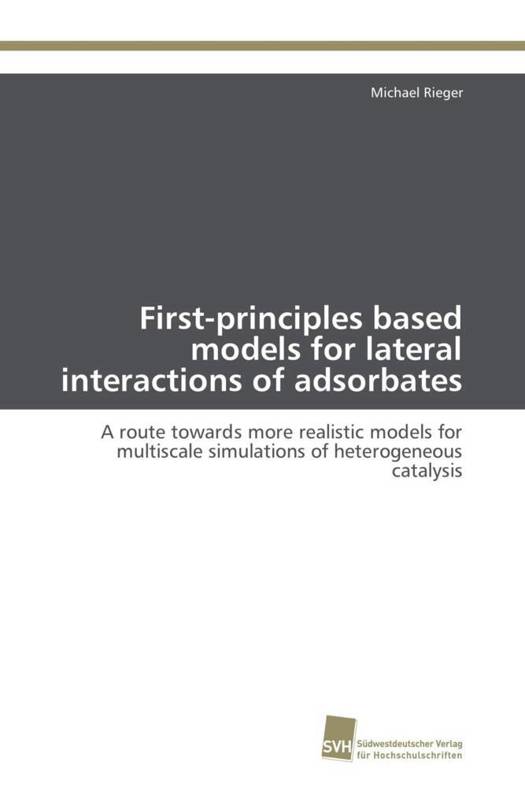
- Afhalen na 1 uur in een winkel met voorraad
- Gratis thuislevering in België vanaf € 30
- Ruim aanbod met 7 miljoen producten
- Afhalen na 1 uur in een winkel met voorraad
- Gratis thuislevering in België vanaf € 30
- Ruim aanbod met 7 miljoen producten
Zoeken
First-principles based models for lateral interactions of adsorbates
A route towards more realistic models for multiscale simulations of heterogeneous catalysis
Michael Rieger
Paperback | Engels
€ 87,45
+ 174 punten
Omschrijving
The adsorption of a molecule from the gas-phase is what is typically referred to as the first step in heterogeneously catalyzed processes. The bond strength to the substrate is not only influenced by the formation energy of the surface bond but also by the interactions between neighboring particles. These interactions can have either a stabilizing or destabilizing effect. Quantifying these on a microscopic scale is not always an easy task. It is, therefore, of great importance for model descriptions used in computer simulations for these kind of systems to properly describe the interactions of the adsorbates in the plane parallel to the surface - the lateral interactions. An ideal model would be one whose parameters are derived from a set of calculations on the level of electronic structure theory. In addition, the derived parameters of this model should be chosen such that even in the mesoscopic model all parameters would retain their microscopic meaning. This is the major topic of the thesis presented here. Starting from a simple qualitative model for the description of the interplay between lateral interactions and chemisorption, two limiting cases will be discussed.
Specificaties
Betrokkenen
- Auteur(s):
- Uitgeverij:
Inhoud
- Aantal bladzijden:
- 200
- Taal:
- Engels
Eigenschappen
- Productcode (EAN):
- 9783838129037
- Verschijningsdatum:
- 22/11/2011
- Uitvoering:
- Paperback
- Afmetingen:
- 152 mm x 220 mm
- Gewicht:
- 299 g

Alleen bij Standaard Boekhandel
+ 174 punten op je klantenkaart van Standaard Boekhandel
Beoordelingen
We publiceren alleen reviews die voldoen aan de voorwaarden voor reviews. Bekijk onze voorwaarden voor reviews.








